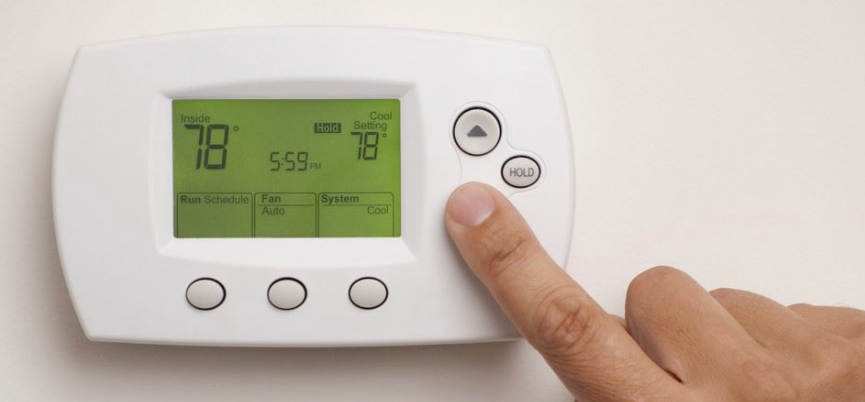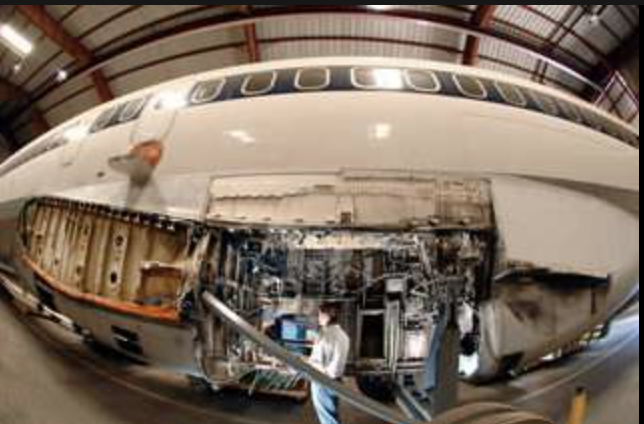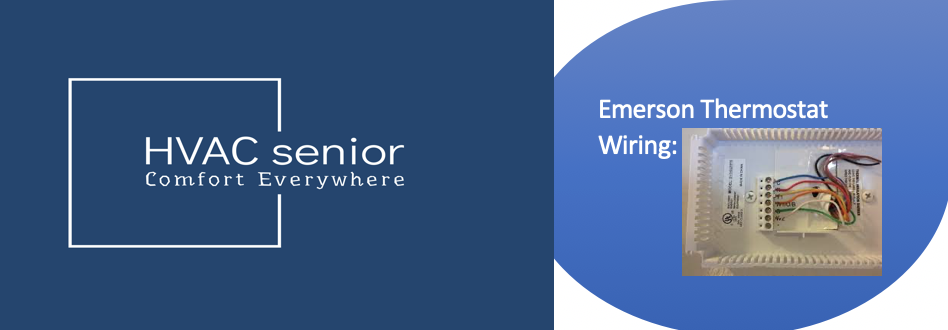Thermostat Turned Off But Still Blowing Air? Find out why and fix it.
You naturally anticipate your HVAC (Heating, Ventilation, and Air Conditioning) system to obediently stop blowing air through the vents when you take the initiative to turn off your thermostat.This is why Thermostat Turned Off But Still Blowing Air post was needed by most of my clients.
It makes sense to take this action in order to save energy and possibly lower your regular utility bills.
Related post>>>>Thermostat clicks but furnace doesn’t turn on.
However, in some puzzling circumstances, you might discover that the fan keeps running even when the thermostat is unambiguously set to “off.”
This specific circumstance can be very frustrating because it seems to go against your goals and intentions.
At a glance: Thermostat Turned Off But Still Blowing Air due to Thermostat Set to Circulate Mode,Intermittent Short-Circuit,Defective Thermostat or Malfunctioning Fan Limit Switch.
There are a number of possible causes for the situation when a thermostat is off but the air is still blowing.
One of the typical offenders is a thermostat that has unintentionally been set up to run in the “circulate” mode, which keeps the air circulating in your home even when the cooling or heating function is off.
An intermittent short-circuit in the thermostat’s wiring or an issue with the thermostat itself could be another possibility, causing it to misinterpret your command.
This oddity may also be brought on by a broken fan limit switch, a part that aids in controlling the fan’s operation, which would make the fan run even when it shouldn’t.
It’s essential to comprehend these fundamental causes if you want to resolve the problem of a thermostat that is off but is continuously blowing air.
This post enables homeowners to analyze and fix the issue, thereby ensuring improved control over the performance and energy usage of their HVAC system.
Let’s look into what may be causing your HVAC system to blow air when it isn’t supposed to in more detail.
1.Thermostat Set to Circulate Mode.

In order to properly understand this phenomenon and make wise judgments, it is crucial to go deeper into the causes and remedies when dealing with the perplexing issue of a thermostat that is off but continuously blowing air.
The “circulate” mode on your thermostat is one typical explanation for this problem. When your thermostat is set to “circulate,” it tells the fan in your HVAC system to keep operating even when the heating or cooling system is not in use.
This mode’s goal is to improve air circulation in your home, which can help you maintain comfortable temperatures and good indoor air quality.
However, if you’re not aware with how this feature works, the existence of constant airflow could be perplexing. Some homeowners might mistakenly believe it to be a problem, which could result in needless service calls or repair costs.
To start solving this problem, check the temperature on your thermostat. The system is designed to operate with a steady airflow when in the “circulate” mode. Knowing this can help you avoid unnecessary anxiety.
Switching your thermostat to “auto” mode will allow you to quickly avoid having the fan run continuously.
You have more control over how your HVAC system runs when it is in “auto” mode, which only activates the fan when the heating or cooling system is actually in use.
It’s important to keep in mind that while the “circulate” setting improves air circulation, it can also result in higher energy usage and consequent utility costs.
Selecting “auto” mode is a wise decision if you are concerned about the energy expenses associated with this feature. By balancing comfort and energy efficiency with this change, you can make your HVAC system run more effectively without constantly blowing air when it’s not needed.
Dealing with a thermostat that is off but still blowing air requires an awareness of the interactions between thermostat settings and fan functioning.
You can maintain better control over your HVAC system while reducing unnecessary costs and energy consumption by identifying the “circulate” mode as a potential problem and switching to “auto” mode as a remedy.
Also read>>>>Honeywell Thermostat Aux Heat.
2.Intermittent Short-Circuit.

The existence of an intermittent short-circuit is yet another typical cause of the perplexing situation when a thermostat is off yet continues blowing air.
For a variety of causes, short-circuits can occur, and when they do, the disruptive effects they have on HVAC systems can be especially puzzling.
There are many reasons why your thermostat or HVAC wire can short circuit, including faulty wiring or components that have deteriorated over time.
A short-circuit may form as a result of frayed or damaged insulation caused by wiring wear and strain. In rare cases, uninvited visitors like vermin or rodents may have gnawed their way through the wiring, resulting in sporadic shorts that can cause chaos.
A careful analysis of the wiring at both ends, particularly the thermostat and the furnace terminal block, is essential to adequately address this issue.
This thorough examination aims to spot any obvious short-signs, such as exposed wires, melted insulation, or burn marks.
Short-circuit repair, however, goes beyond just fixing the immediate issue; it also emphasizes the value of preventative maintenance.
Your HVAC system needs to be inspected and maintained on a regular basis if you want to avoid problems like short-circuits in the first place.
Regular maintenance makes sure that every part is functioning at its best, thereby lowering the possibility of wiring accidents.
This proactive strategy not only saves you the annoyance of a thermostat that is off but still blowing air, but it also saves you the time, money, and stress of unanticipated HVAC problems.
It is critical to identify intermittent short-circuits as a potential cause of a thermostat that has been switched off but is continuously blowing air.
You can recover control over your HVAC system’s performance and experience peace of mind knowing that it is in reliable working order by resolving wiring problems and implementing a proactive maintenance schedule, which will spare you from the annoyances of unanticipated breakdowns.
Also read>>>>Honeywell Thermostat connection failure.
3.Defective Thermostat.
A faulty thermostat is yet another probable cause of the perplexing problem of a thermostat that is off yet still spewing air.
These crucial temperature-controlling appliances may experience wear and tear over time, which could result in problems that prevent your HVAC system from working as it should.
When your HVAC system insists on running continually even after you’ve carefully set the thermostat to “off,” it is a blatant sign that your thermostat is broken.
This continued activity in defiance of your commands is a clear indication that there is a problem with the thermostat.
There are a few actions you can take in the troubleshooting process if you think your thermostat is the issue. First, think about changing the thermostat’s batteries.
In rare circumstances, an unstable thermostat might be brought on by a low or failed battery. A quick battery swap could cure the issue and get your thermostat working again.
Fresh batteries might help, but if the problem still exists, it might be essential to completely replace the thermostat.
For some homeowners, replacing a thermostat might be a do-it-yourself task they can handle. To ensure a proper installation, it is essential to strictly follow the manufacturer’s instructions.
It’s suggested to hire a certified HVAC specialist if you’re not fully confident performing this procedure or if you run into difficulties when replacing the unit.
The new thermostat will operate properly thanks to the installation handled by these professionals, who have the necessary training and experience.
Additionally, a qualified HVAC professional is capable of more than just replacing the thermostat. They are qualified to identify and address any underlying problems, such as flawed wiring or broken components, that may be causing thermostat difficulties.
In addition to ensuring the appropriate operation of your new thermostat, addressing these core issues also ensures the secure and effective operation of your whole HVAC system.
It’s critical to identify a broken thermostat as a probable reason of a thermostat that is off but still blowing air.
You can recover control over the performance of your HVAC system and improve the comfort and energy efficiency of your house by taking steps to troubleshoot and, if necessary, replace the thermostat.
Consultation with a qualified specialist offers a thorough solution that not only addresses the current problem but also guards against future failures.
Also read>>>Thermostat Keeps Clicking.
4.Malfunctioning Fan Limit Switch.
We come across yet another potential offender in the complex conundrum of why a thermostat is off but the air is still blowing: the broken fan limit switch.
This sometimes ignored part is essential for controlling how your HVAC system’s blower fan operates and for keeping the proper temperature and circulation.
As a thermostat for your blower fan, the fan limit switch’s main duty is to turn it on and off as needed to maintain optimal temperature management and airflow distribution.
Even though your thermostat is obviously set to “off,” the fan may operate when it shouldn’t if this crucial switch malfunctions.
There are a few telling indicators that could point to a broken fan limit switch. The fan’s continued running even while your heating or cooling system is not actively adjusting the air temperature is one obvious sign.
Another blatant sign of this problem is a fan that runs continuously and uninterruptedly rather than turning off as planned.
There is a first troubleshooting step you can do if you suspect that a broken fan limit switch is the cause of your HVAC system blowing air when it shouldn’t be.
The furnace’s blower compartment is normally where you’ll find the fan limit switch. Cleaning this component can help, as accumulated dust or debris can occasionally cause it to malfunction.
However, you must approach this task cautiously because any maintenance or repair work involving HVAC components must be done carefully.
It’s suggested to hire a qualified HVAC specialist if cleaning the fan limit switch doesn’t solve the issue or if you’re unsure how to handle such activities.
A qualified expert can correctly identify the problem and, if required, replace the broken fan limit switch to get your HVAC system operating as it should again.
You can restore control over the environment in your house and make sure that your HVAC system performs with the efficiency and accuracy you expect by fixing this specific reason of a thermostat that is off but still blowing air.
In conclusion, it is critical to identify a broken fan limit switch as a potential cause of a thermostat that is off but continues blowing air.
By taking action to troubleshoot and, if necessary, clean or replace this component, you can preserve the comfort and energy efficiency of your house while also ensuring that your HVAC system functions as intended.
Working with a qualified specialist ensures that the problem will be fully fixed, preventing any further inconveniences.
Also read>>>>HoneyWell Thermostat Blank Screen.
Frequently Asked Questions (FAQs).
1. Why is my thermostat still blowing air when it’s turned off?
Answer: There are several potential reasons for this issue. This happens when thermostat being set to circulate mode, an intermittent short-circuit in the wiring, a defective thermostat, or a malfunctioning fan limit switch.
2. How can I determine if my thermostat is in “circulate” mode?
Answer: If the HVAC system is continuously blowing air, even when the thermostat is set to “off,” you should check the thermostat settings.
If it’s set to “circulate,” the constant airflow is normal. To stop the fan from running continuously, switch the thermostat to “auto” mode.
3. Can a low or failing battery in my thermostat cause it to malfunction?
Answer: Yes, a low or failing battery in your thermostat can lead to malfunctions, including continuous fan operation. Replacing the thermostat’s batteries is a simple troubleshooting step that may resolve the issue.
4. What should I do if replacing the thermostat’s batteries doesn’t fix the problem?
Answer: If replacing the batteries doesn’t resolve the issue, you may need to replace the thermostat itself. Follow manufacturer instructions carefully for proper installation, or contact a licensed HVAC professional for assistance.
5. How can I tell if the fan limit switch is causing my HVAC system to blow air when it’s not supposed to?
Answer: Signs of a malfunctioning fan limit switch include the fan continuing to run when the heating or cooling system is off and the fan running continuously without turning off at all.
6. Can cleaning the fan limit switch help if it’s malfunctioning?
Answer: Cleaning the fan limit switch, located in the furnace’s blower compartment area, is a potential troubleshooting step.
Dust or debris accumulation can sometimes interfere with its operation. However, if cleaning doesn’t resolve the issue, it’s best to consult a professional HVAC technician.
7. How can I prevent issues like a thermostat turned off but still blowing air?
Answer: Regular HVAC system maintenance is key to preventing such issues. This includes inspecting and cleaning components, checking for wiring problems, and ensuring the thermostat is functioning correctly.
A professional technician can help diagnose and address underlying issues, promoting efficient and trouble-free operation.
Conclusion.
It’s important to take into account a variety of potential causes and solutions when dealing with the perplexing scenario of a thermostat that is off yet continues blowing air.
These include “circulate” mode settings, sporadic short-circuits, a broken thermostat, and a broken fan limit switch.
Troubleshooting techniques like changing the battery and installing the thermostat carefully can frequently cure problems.
However, it’s advisable to seek the advice of a certified HVAC professional when in doubt or when dealing with more difficult issues. preserving your HVAC system’s efficiency and dependability while preserving your home’s comfort and energy efficiency is vital for avoiding these problems.









